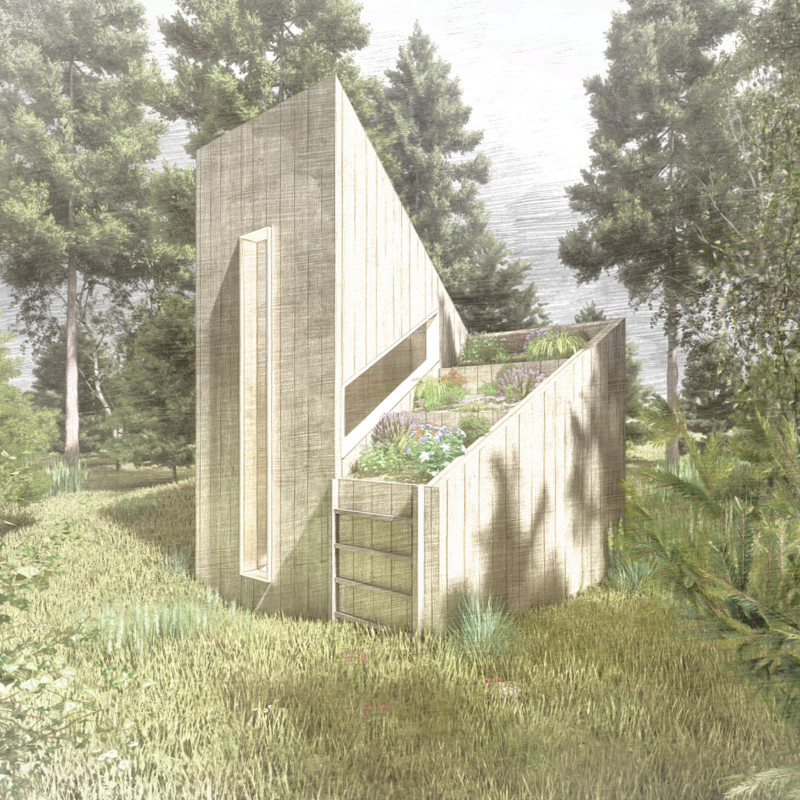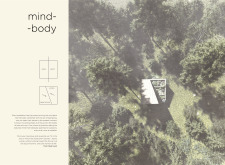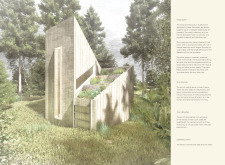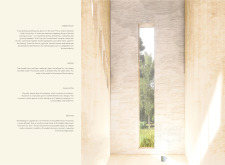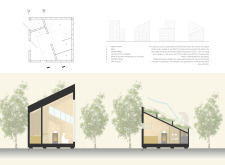5 key facts about this project
The design presents a thoughtful exploration of the connection between the mind and body, set in a natural environment that promotes reflection and awareness. A cabin serves as a peaceful retreat, emphasizing silence and meditation in its layout while encouraging interaction with nature. Its design thoughtfully considers spatial organization and the overall experience, aiming to enhance mindfulness in everyday life.
Spatial Configuration
The cabin contains two distinct areas that create different experiences. The first area is tall and open, allowing in plenty of natural light. This vertical space fosters a sense of elevation, inviting occupants to reflect and find stillness. The scale of the area makes one feel small in relation to the surrounding forest, encouraging moments of introspection.
The second area is more compact and functional, designed to bring occupants closer to the ground. Horizontal openings connect the interior with the earth, encouraging a return to everyday activities like resting and preparing food. This combination of spaces illustrates a thoughtful architectural approach, balancing moments of elevation with grounding routines.
Cultural Integration
Tea making is a central element of the design, merging cultural importance with sensory experiences. The practice provides a framework for social connection and personal mindfulness. Drinking tea enhances the senses, deepening the ties to memory and place while aligning with the project's goal of promoting present-moment awareness.
Material Performance
Material choice is central to the project’s ecological focus, with mycelium used for insulation. This naturally occurring material can be grown on-site, presenting an eco-friendly option that reduces environmental impact. Its compostable nature fosters energy efficiency, contributing to the cabin's overall performance by managing thermal comfort.
The living roof is another important feature, offering space to grow tea ingredients and regional plants. This green area supports the cultivation of edible varieties and also acts as a rainwater collection system, directing water for necessary uses within the cabin.
Through these design choices, the cabin connects architecture with the surrounding nature, framing views of the forest and shaping the experiences of its occupants. The relationship between built spaces and the natural environment enriches daily life, anchoring individuals in a deeper sense of presence and awareness amid the structure.


